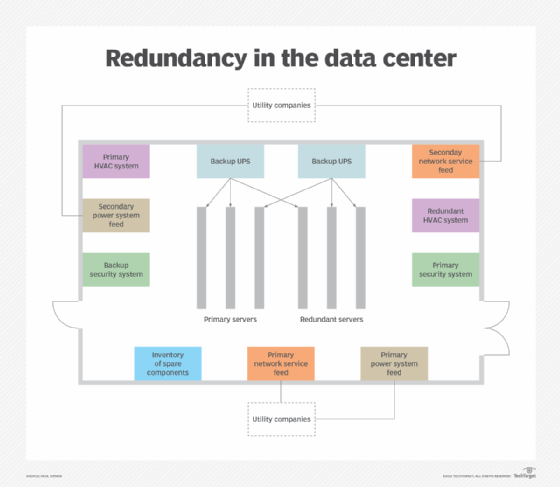Exploring the Operational Dynamics of Company Redundancy and Its Long-Term Sustainability

Redundancy Techniques for Organization Continuity
In order to ensure uninterrupted operations, organizations must execute reliable redundancy methods for service connection. Redundancy in this context refers to the duplication of crucial parts or features within a system to alleviate the effect of prospective failings. By incorporating redundancy approaches, companies can boost their resilience against interruptions caused by different factors such as all-natural disasters, equipment failings, or cyber-attacks.
One typical redundancy technique is the execution of back-up systems and information storage solutions. This includes creating matches of necessary data and systems that can be activated in instance of a main system failing. In addition, organizations can develop redundant communication channels and power sources to keep connection and operations throughout unforeseen events.
Moreover, cross-training staff members to do several functions within the firm can offer as a useful redundancy strategy. If key workers are unavailable due to disease or various other factors, this ensures that necessary jobs can still be carried out also. On the whole, reliable redundancy approaches are important for businesses to promote functional connection and lessen the influence of potential disturbances.
Effect of Redundancy on Business Strength
Offered the crucial duty redundancy methods play in guaranteeing company continuity, checking out the influence of redundancy on business strength becomes critical for comprehending the alternative operational dynamics of a business. Redundancy, when purposefully executed, can considerably contribute to improving a company's resilience in the face of unforeseen challenges.
Furthermore, redundancy can cultivate innovation and creative thinking within a company as workers really feel equipped to take calculated risks, understanding that there is a safety internet to support them in instance of failure. In general, the effect of redundancy on organizational resilience is profound, forming the long-term sustainability and success of a company.
Stabilizing Effectiveness and Flexibility in Redundancy
Accomplishing an unified equilibrium in between functional performance and flexible flexibility is a crucial obstacle in the calculated release of redundancy within companies. Also much versatility without a solid operational foundation can result in ineffectiveness and incongruity.
To stabilize efficiency and versatility in redundancy preparation, organizations have to very carefully evaluate their operational requirements, market characteristics, and calculated objectives. Inevitably, locating the best balance between effectiveness and flexibility is crucial for developing a resistant and sustainable organization in the face of unpredictability.
Long-Term Sustainability With Redundancy Preparation
To make certain long-lasting viability and stability, companies should purposefully align their redundancy planning with long-lasting sustainability goals, thus balancing functional efficiency with flexible adaptability. Business must watch redundancy not as a reactive service to immediate issues however as a positive technique for lasting success.

Positive Actions for Sustainable Firm Workflow
Exactly how can business proactively enhance their operational sustainability for long-term success? Executing positive procedures is necessary for companies intending to make sure lasting operations.
Additionally, fostering a society of continuous enhancement and discovering within the organization can improve adaptability to changing market conditions and client demands. Urging worker participation in decision-making processes and supplying possibilities for professional growth can improve spirits, performance, and total performance. Establishing clear objectives, keeping track of essential efficiency signs, and on a regular basis evaluating progression are crucial parts of proactive sustainability monitoring.
Collaborating with suppliers, customers, who pays redundancy money and other stakeholders to promote sustainable practices throughout the supply chain can produce a causal sequence of favorable impact - redundancy pay if company goes bust. By taking aggressive steps towards operational sustainability, firms can develop durability, drive development, and safeguard their long-lasting success in an ever-evolving organization landscape
Conclusion

In the realm of business administration, the calculated deployment of business redundancy stands as a crucial yet detailed method that demands a fragile equilibrium in between functional efficiency and long-lasting viability. By dissecting the operational dynamics that underpin firm redundancy and examining its broader ramifications for business strength and flexibility, a nuanced understanding of just how redundancy strategies can shape the future trajectory of a firm begins to unfold.Provided the essential role redundancy techniques play in making sure service continuity, exploring the influence of redundancy on business durability becomes vital for recognizing the alternative operational characteristics of a business. Generally, the impact of redundancy on organizational durability is profound, shaping the long-term sustainability and success of a business.
In conclusion, comprehending the operational dynamics of business redundancy is critical for ensuring long-term sustainability.